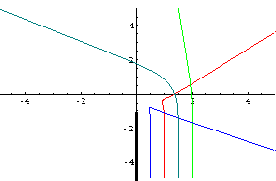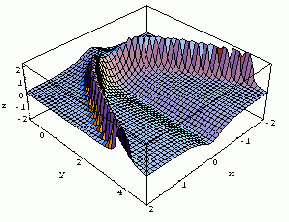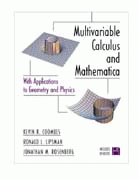

The CLeaR Project:
Multivariable Calculus at the
University of Maryland, College Park
Using mathematical software to enhance undergraduate
education.
Goals
CLeaR is an acronym for the developers (Drs.
K. Coombes,
Ron Lipsman , and
J. Rosenberg)
of a computer supplement for the sophomore Multivariable Calculus
course at the University
of Maryland. The goals
of this project are:
- To enhance students' understanding of the fundamental concepts of
mathematics presented in the traditional courses at the sophomore
level and above;
- To provide students with a tool, in the form of a modern
mathematical software system, for exploring, understanding, and using
mathematics; and
- To improve students' abilities to communicate their understanding
of mathematics to faculty, peers, and others.
Materials
Since 1995, CLeaR has been using the mathematical
software system Mathematica
in Math 241, the sophomore multivariable calculus course at UMCP.
These experiments have resulted in the book

Multivariable Calculus and Mathematica,
with Applications to Geometry and Physics,
published by the TELOS imprint of Springer-Verlag,
which can be used as a supplementary textbook
along with any multivariable calculus text.
(At Maryland, we are using it along with the primary text
Calculus with Analytic Geometry, 5th Edition, by Ellis
and Gulick.) The CLeaR materials have three
components: nontraditional multivariable calculus supplements;
original computer problem sets; and help on how
to make most effective use of Mathematica. Each of
these is unusual in its own way.
- Multivariable Calculus Supplements
- In these chapters, students are introduced to those aspects of
elementary differential geometry, optimization and physics that, while
vitally important and most relevant to the needs of practising
scientists and engineers, are usually omitted, or only treated
briefly, in a traditional text. The software systems render these
topics, almost untreatable in an old format, easily and stimulatingly
accessible to undergraduates.
- Problem Sets
- In the problem sets, the student brings to bear newly acquired skills in
the computer system to solve non-traditional problems in multivariable
calculus, elementary differential geometry, optimization and
physics. The emphasis is on the geometric, symbolic, numeric, and
qualitative aspects of the subject. The problems, each of which is a
small project, are designed to force the student to engage in
critical, analytic, and interpretive thinking beyond rote manipulation
of algebra and calculus formulas.
- Mathematica Help
- One of the goals of the CleaR materials is to train students to a
level of proficiency in the mathematical software system Mathematica
at which they can use it as an effective tool for further
significant applications to problems in geometry,
physics, and engineering. Help in achieving this end is provided through
glossaries of Mathematica commands at the end of every chapter,
a comprehensive glossary at the end of the book,
a Mathematica Tips chapter, and a diskette with several sample
Mathematica notebooks packaged with the book.
Results
The effects of the project, aside from achieving the goals indicated
above, include: creating a mathematical computational culture among
students (they use the tools they take away from this course in
other courses, in lab reports, and later on in their jobs);
fostering cooperative learning (students are encouraged to work in
teams, and they quickly become acclimated to cooperative
problem-solving in a team setting); enhanced visual and communication
skills (the interface allows the student to integrate textual, symbolic,
and graphical material in an informative and effective way). Most
importantly, the intellectual level of the course has been
raised - without a drop in student performance.
Comments may be
directed to the authors at the following addresses.
Kevin Coombes (krc@math.umd.edu)
Ron Lipsman (rll@math.umd.edu)
Jonathan Rosenberg (jmr@math.umd.edu)



